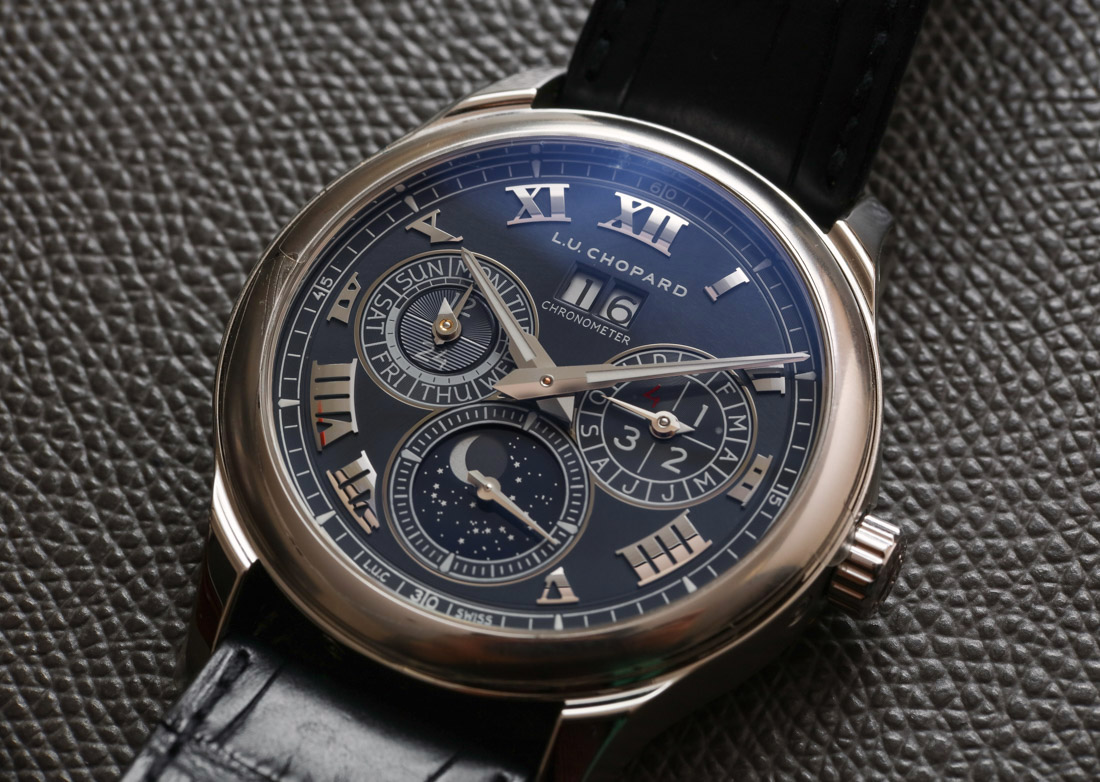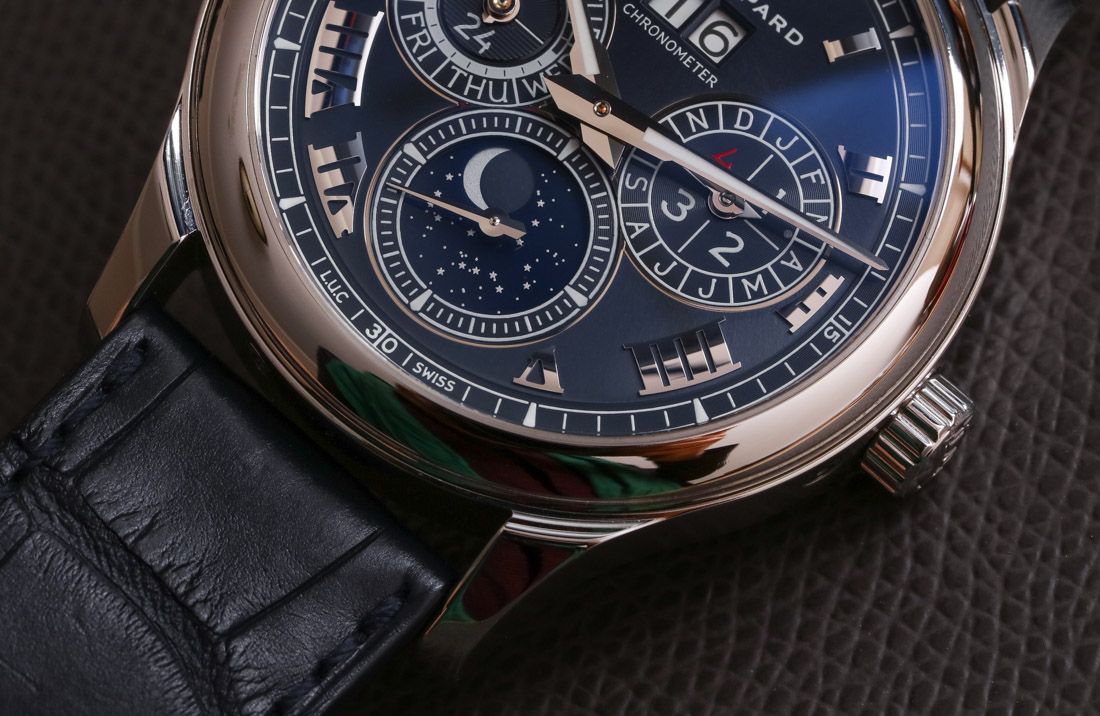
Last on the dial is the moon phase indicator. Chopard gets high marks for an attractive moon phase indication display, which eschews the typical style of the “M-shaped” window for one that appears a bit more natural with a round window. A disc underneath moves in order to replicate the look of the current moon in the sky, which is surrounded by the motif of small stars (which Chopard claims are visually representative of actual starts in the Northern Hemisphere). More so, the moon phase indicator window itself revolves around its own axis in the sub-dial. It’s not a functional element in my understanding but does indeed help the dial remain fresh and interesting. The moon phase design element is intentionally noticeable and emphasized on these timepieces, whose name once again is “Lunar One.”

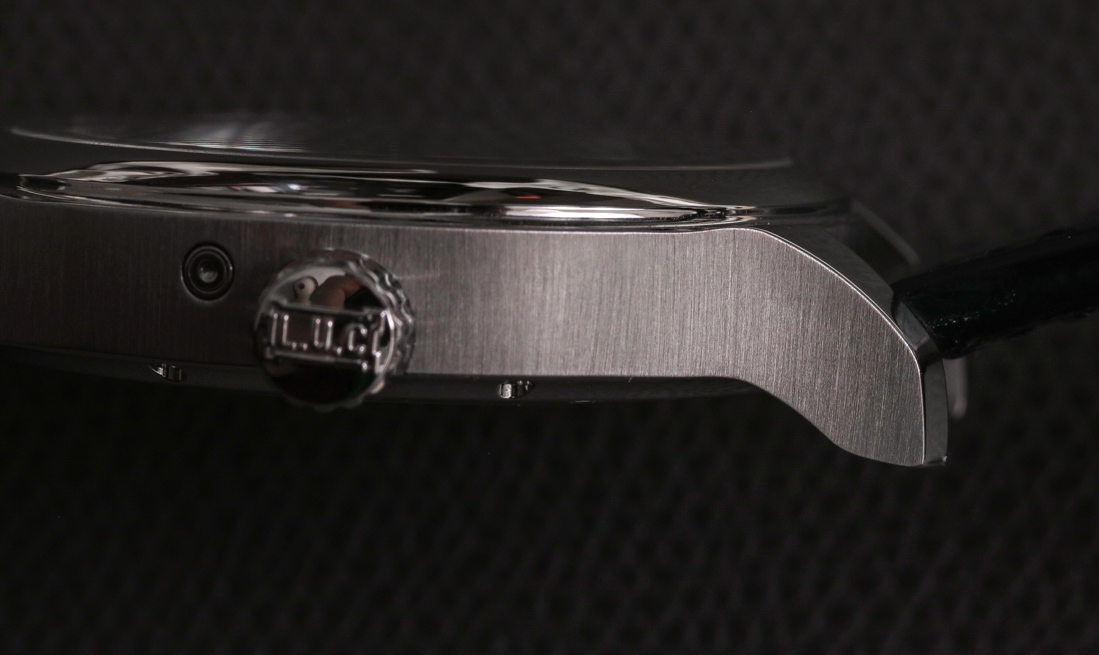
Even though some of the dial complications can be adjusted via the crown, the L.U.C Lunar One case has four inset pushers on it which can help to quickly adjust the calendar and moon phase information should you leave the watch unworn for a while. I do also realize that the watch is an automatic, but given the volume of complications here that can be a pain to adjust, it would have been nice to either have a power reserve indicator on the dial, or a pusher (like A. Lange & Söhne has on some models) that allows you to advance all the date information by one day at a time.
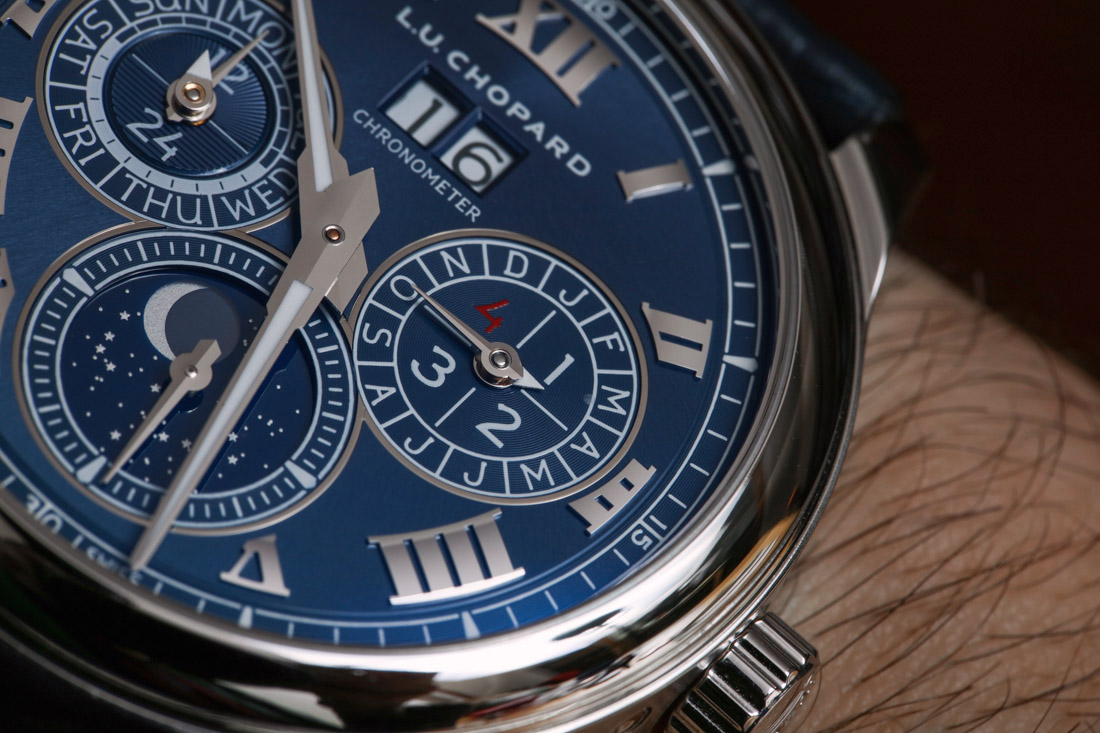
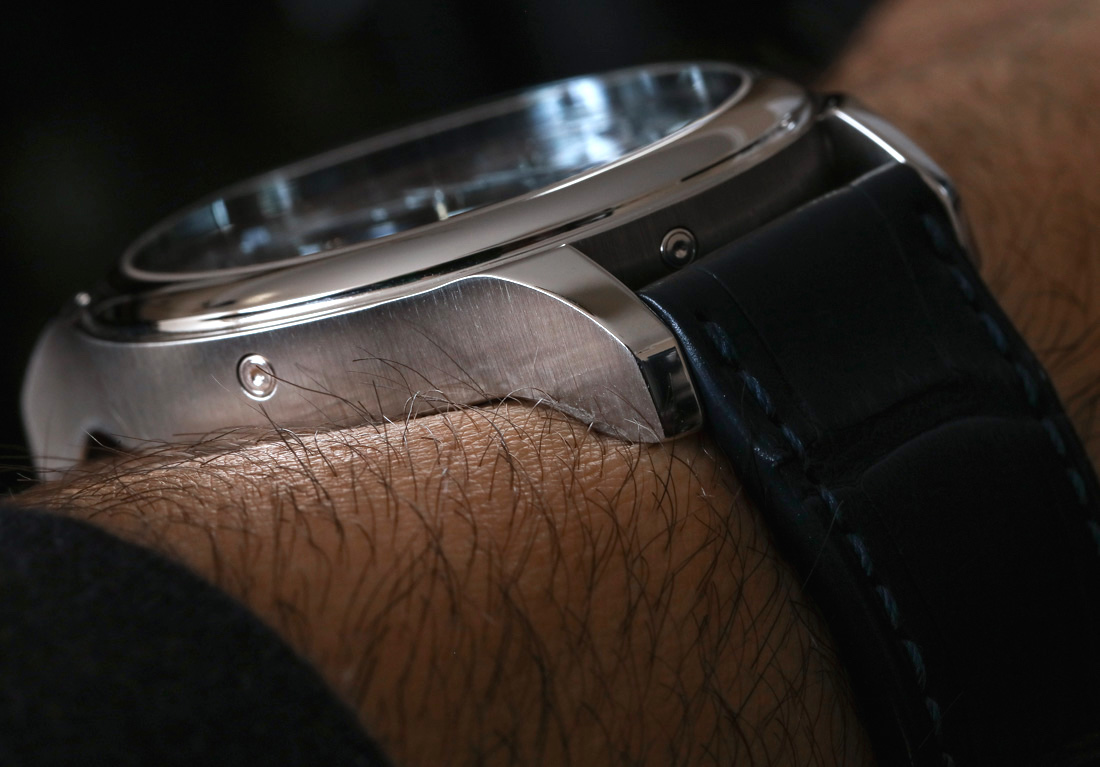
I’m traditionally not a very big fan of platinum as a watch case material, but the precious metal has been growing on me. Seeing this watch from afar, you’d be forgiven for thinking it was 18k white gold or steel and not platinum. While it is true that the color and finishing of platinum, steel, and 18k white gold are a bit different, most people don’t actually know the difference. More so, platinum is a heavy metal in weight, and also prone to scratching easily. So why then is this precious metal even more precious than gold? My understanding is that it comes down to rarity given that platinum (compared to gold) is harder to come by.
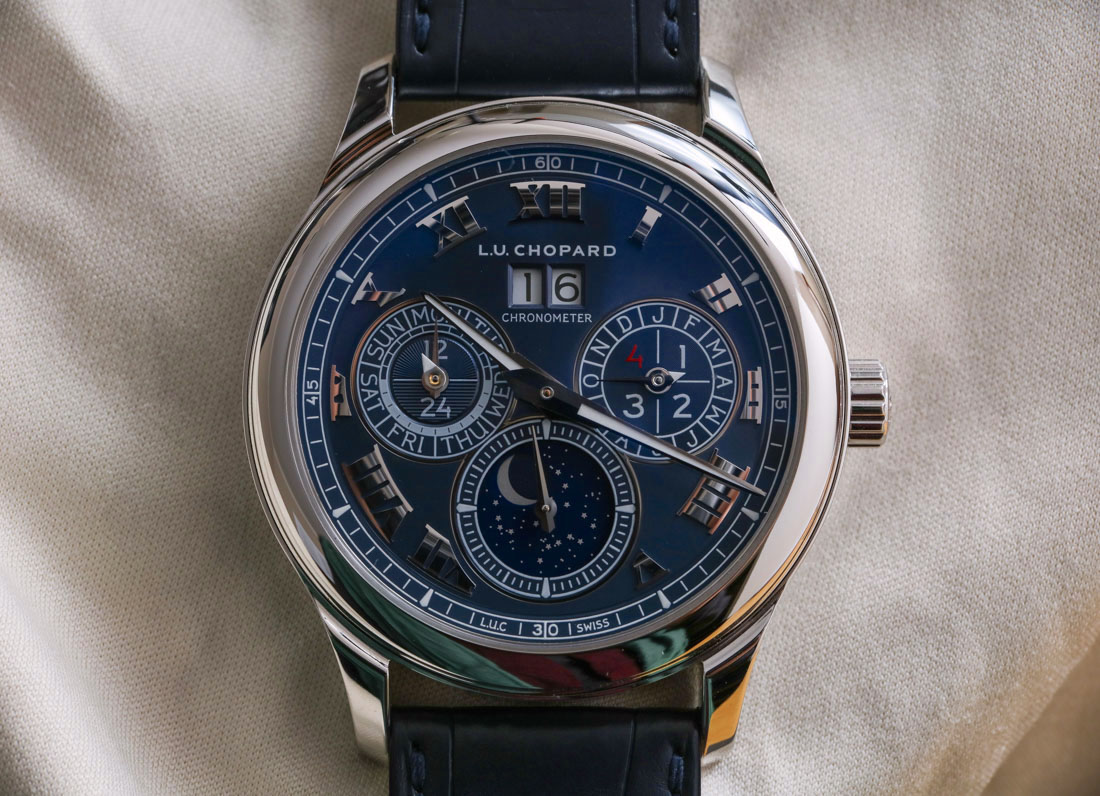
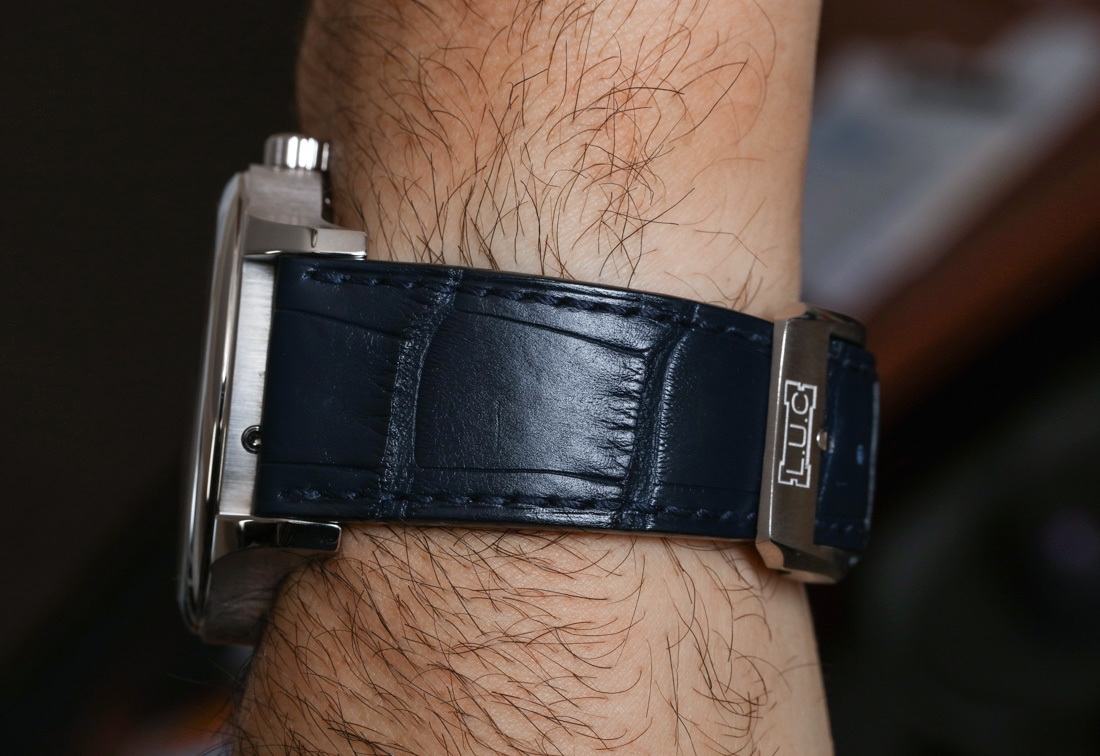
Platinum has grown on me because of its emotional value. For one thing, you never really forget you are wearing a platinum watch. Its weight makes it much more “old school” as a luxury product when weight helped one measure the value of something. Thus, compared to a steel watch, you really know that something different is on your wrist when wearing platinum (and there is value in being reminded of that). Ironically, these days watchmakers are just as interested in making watches lighter in weight (perhaps more interested) than making heavy gold or platinum watches.
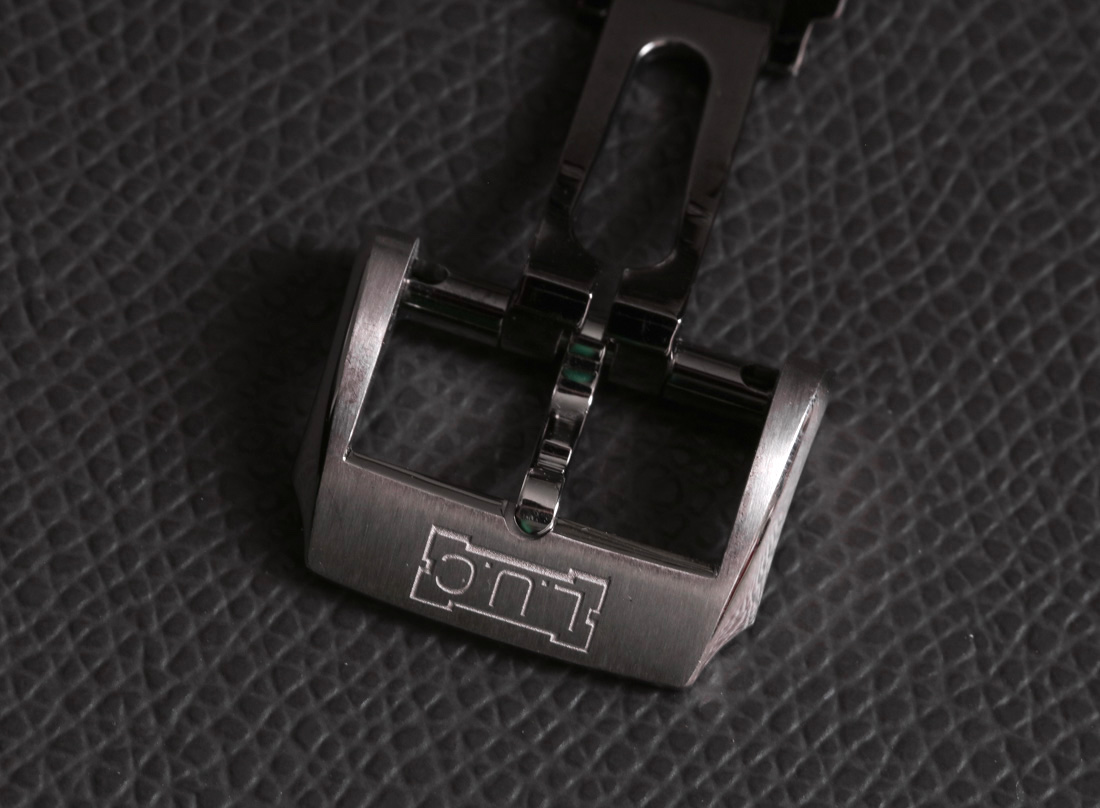

Platinum is also more discreet than yellow gold, or most other alloys of gold. The same argument can be made for white gold. This means that while you as the wearer know you have something precious, that fact is much less obvious for the people seeing the watch on you. Therefore, people who are more interested in having a “personal” relationship with their luxury toys, and wearing them for personal versus public enjoyment, will appreciate platinum. Wearing it means you need to be able to afford it, but it also means you aren’t yelling that fact to the world. This form of “luxury discretion” isn’t something to take lightly, and is a wearing consideration common among watch lovers across the globe.

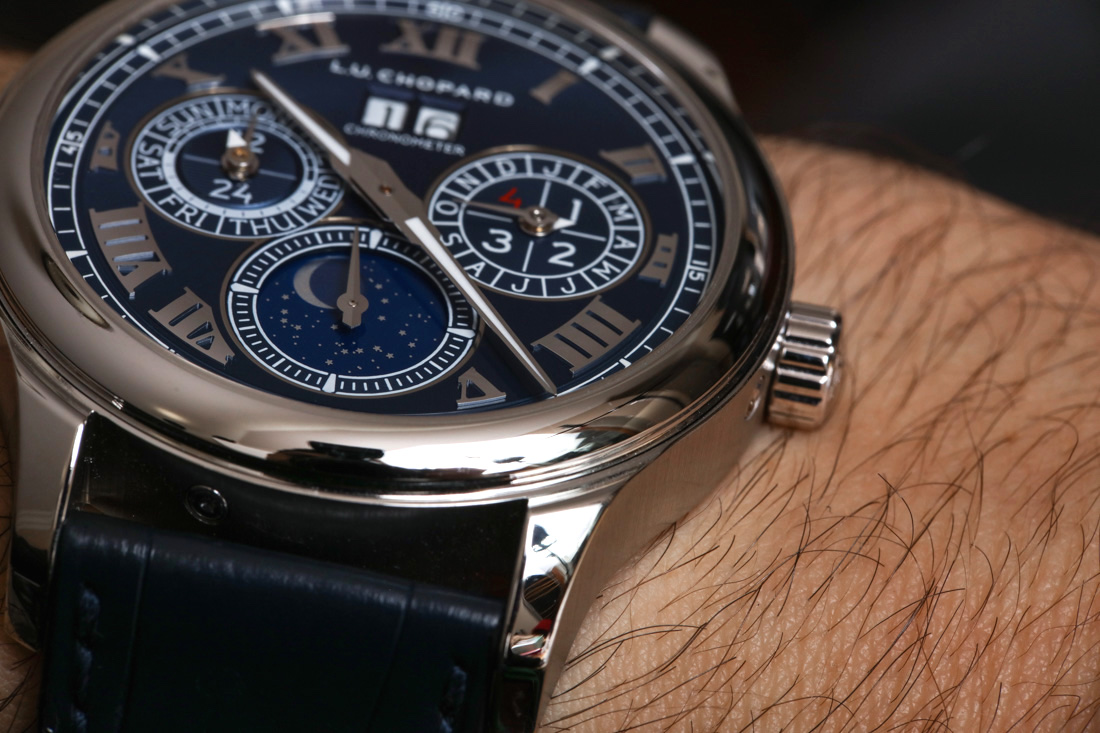
At 43mm wide, the L.U.C Lunar One is 11.47mm thick, with a relatively long lug-to-lug distance of about 52mm (water resistant to 50m). Note that while the case is platinum, the crown is produced from 18k white gold. That is likely because platinum is a harder-to-machine material, and the details in the crown likely make it easier to produce in gold.
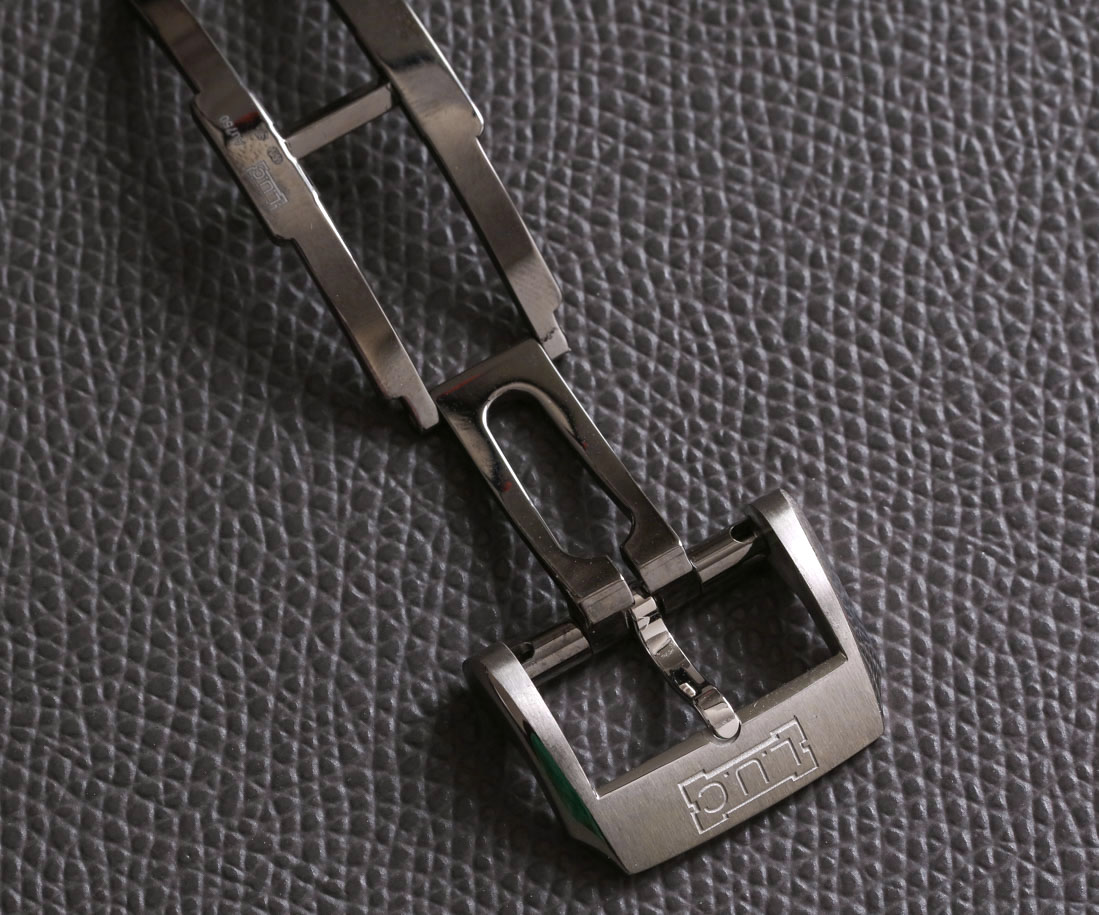
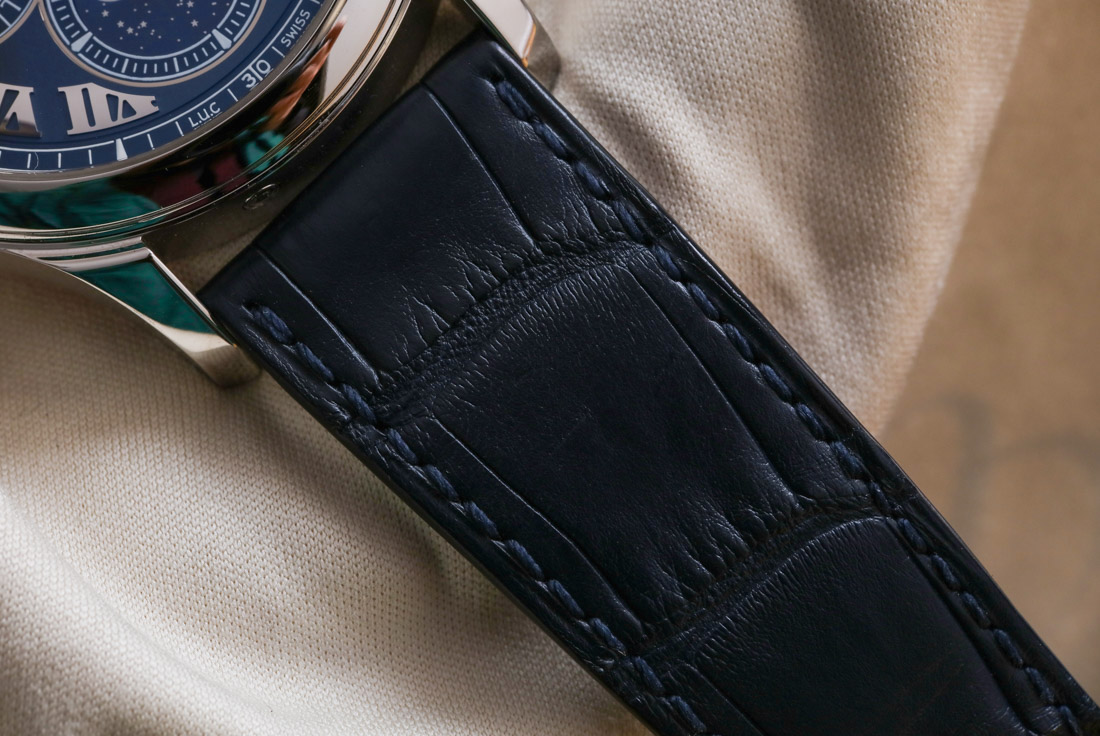
Allow me to compliment Chopard on yet another element of the watch, which is the strap. L.U.C watches typically use among the highest quality straps I know of, and in addition to being attractive, they are very practical. For example, many leather straps (calf, alligator, or otherwise) tend to be stiff and uncomfortable to wear. Factory-fresh, the hand-sewn alligator strap is durable, but also soft and pliable. Bending easily over your wrist, you can get a comfortable fit right away, which is not something I can say for so many high-end watches out there. Attached to the alligator strap is a matching platinum folding deployant buckle.
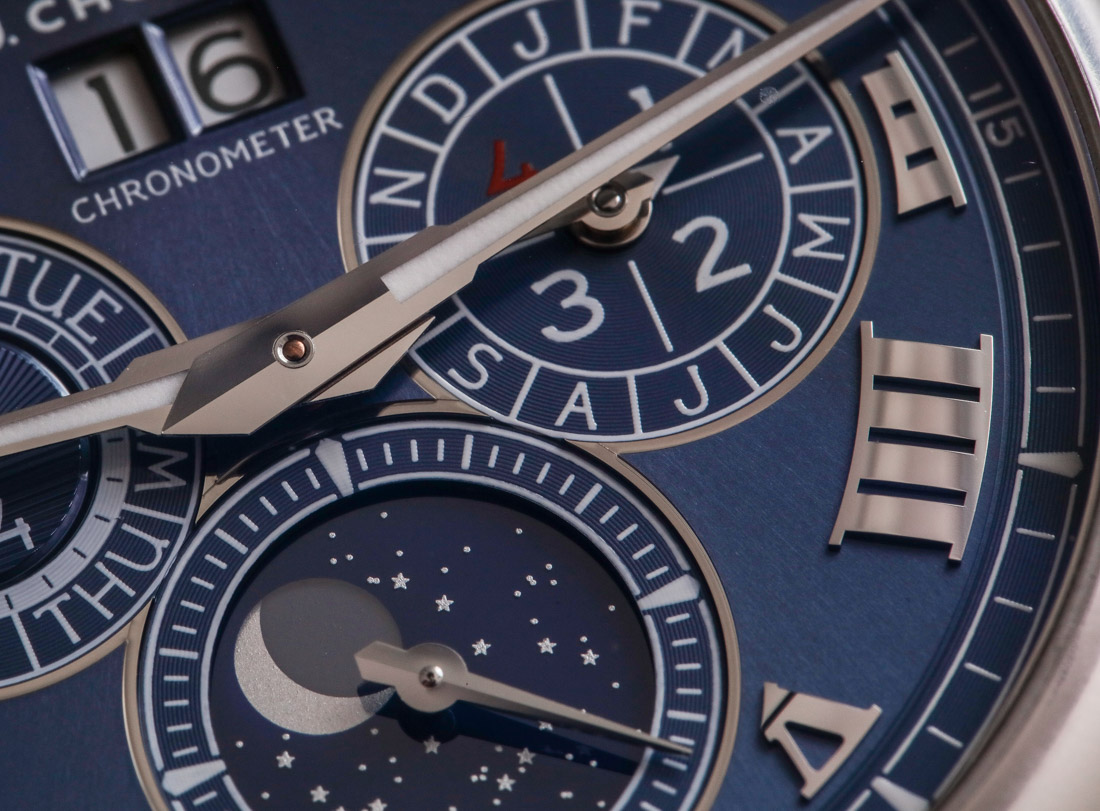
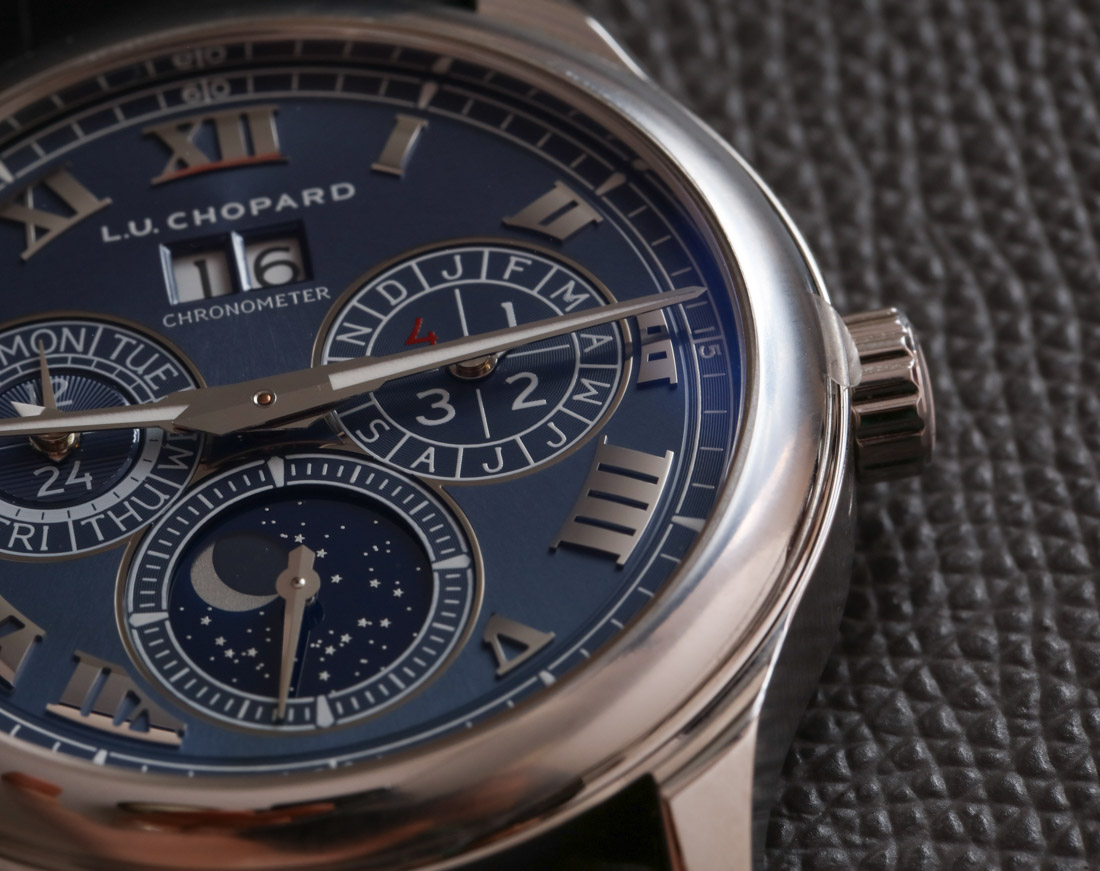
“Platinum perpetual calendar watch” is about all you need to say in front of most watch lovers in order to get them excited. Budget willing, I’d say most people would be interested in owning a product like this, which is both practical to wear and full of prestigious bragging rights. For me, complicated dress watches evoke the image of someone who is at the same time classic and intellectual. This is the thinking man’s formal watch (or the man who routinely forgets what day and month it is – and who also doesn’t have a digital calendar device).
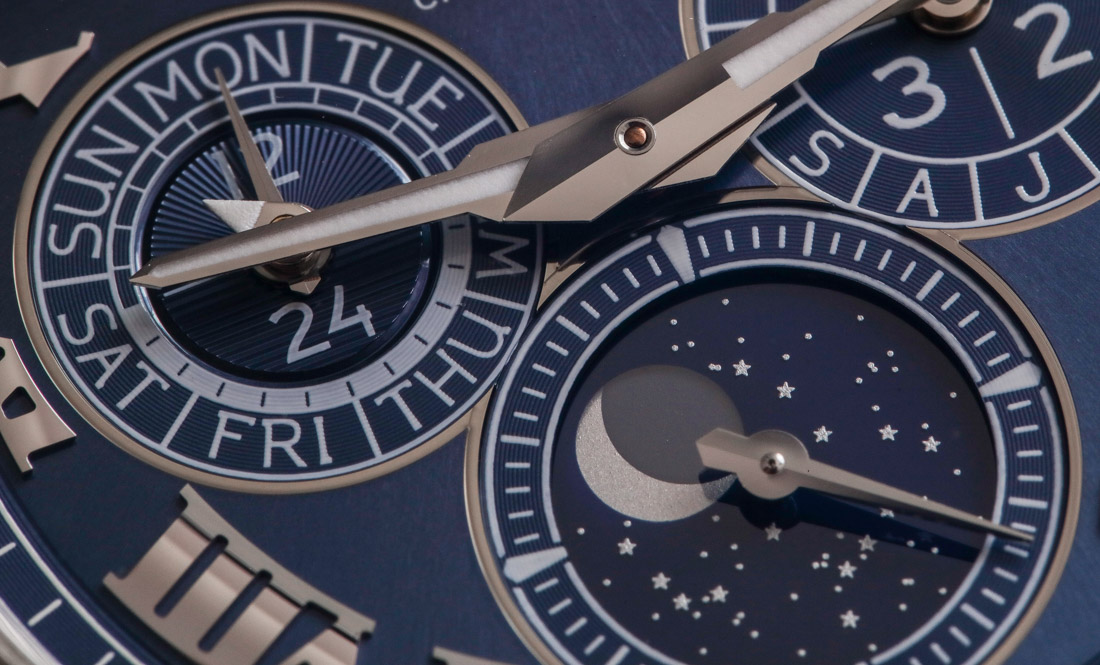
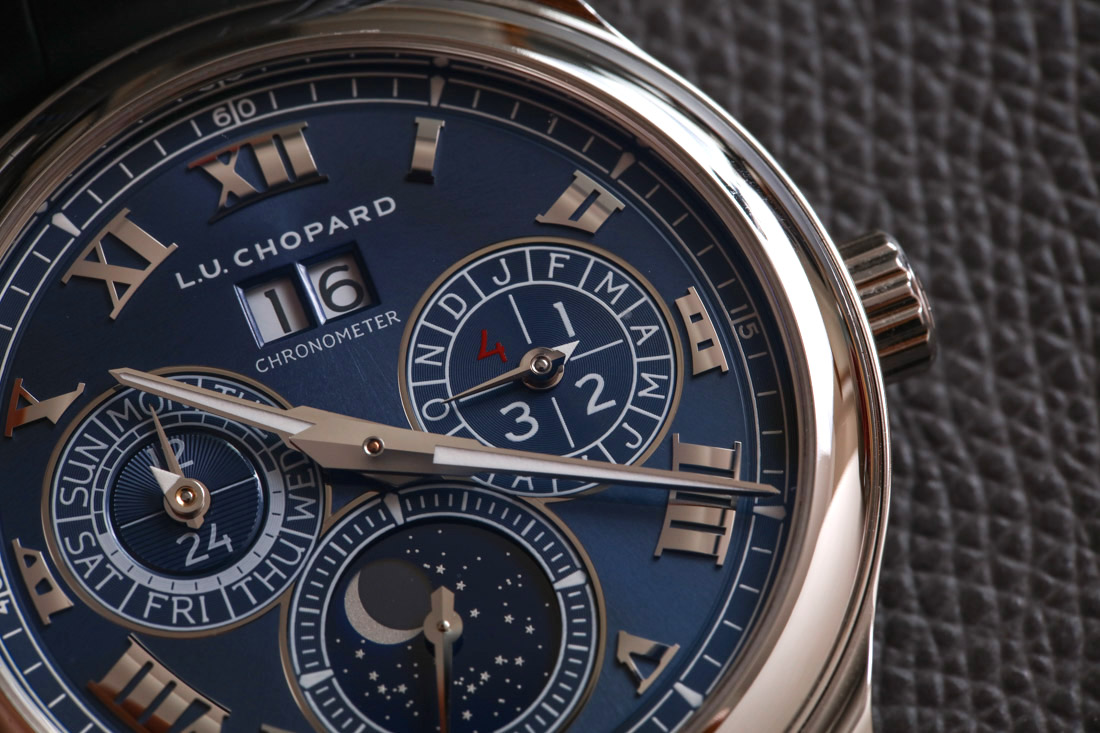
So long as you are open to the fact that a perpetual calendar’s utility and value are mostly emotional, then you are in the right mental state to begin enjoying a perpetual calendar watch. I say all this given that most people are going to use their wristwatch as a quick reference to the date, and not as their sole, reliable calendar device. So with that said, when interested in a perpetual calendar, I recommend seeking one that is otherwise comfortable, a good monetary value, and comfortable to wear. In a sense, the perpetual calendar complication needs to be a welcome add-on (as opposed to a detractor) from an otherwise suitable daily wristwatch. Is the Chopard L.U.C Lunar One just such a watch? I would argue, most certainly. The Chopard L.U.C Lunar One reference 161927-9001 in platinum is a limited edition of just 100 pieces with a retail price of $69,260 USD. chopard.com
Necessary Data
>Brand: Chopard
>Model: L.U.C Lunar One 161927-9001
>Price: $69,260 USD
>Size: 43mm
>Would reviewer personally wear it: Yes.
>Friend we’d recommend it to first: Perpetual calendar-curious lovers wanting to enjoy the prestigious complication in a sizeable (albeit dressy) platinum case.
>Best characteristic of watch: Well-priced for what you get, certainly less than a lot of the competition without sacrifice in quality. Great movement paired with a timeless design, and easy to read (mostly) dial.
>Worst characteristic of watch: Some dial elements are hard to see, which affects legibility. Case size might be too large for some wrists, especially for a timepiece of this formal style. Dial design is aging a bit, and could benefit from an update.

